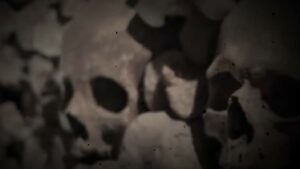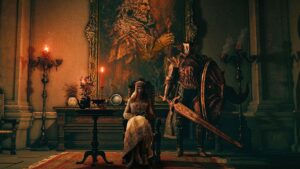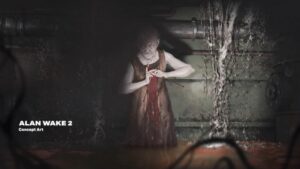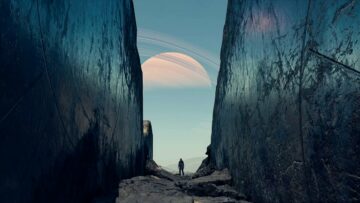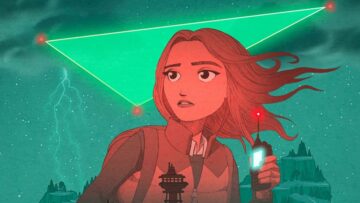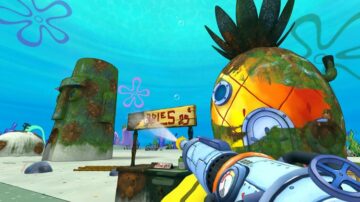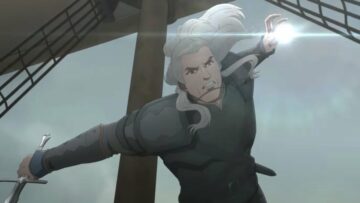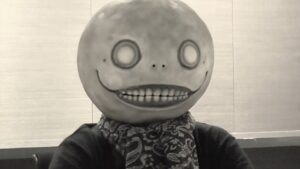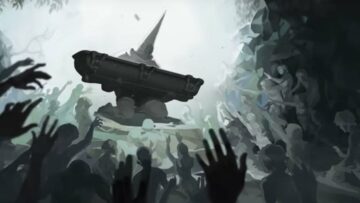It is 1993 and the Wales family has just welcomed a new bundle of joy into the world: a rather fancy 486 DX2/66 desktop PC, sporting 4MB of video memory, 8MB of RAM, a whopping 260MB of storage, and – crucially for this story – like the far-flung future suddenly made manifest, a CD-ROM drive. I’m sure I must have presented a lot of compelling evidence beforehand about how we definitely needed to get a PC because just think how good it’ll be for my schoolwork (and yes, Microsoft Encarta and, later, Microsoft 3D Movie Maker were very educational, thank you), but of course it was all about the games. Talky versions of LucasArts point-and-click adventures! Theme Park but with an extra bit of video so I could pretend I was on the rides! But mainly, a game I’d been dreaming about since seeing its lavishly spooky lobby plastered across the pages of Super Play magazine back when the Super NES CD-ROM was still going to be a thing: developer Trilobyte’s seminal horror adventure, The 7th Guest.
The 7th Guest, for those of you who don’t know (and that would be entirely understandable, given it came out over three decades ago now), was a genuine, honest-to-goodness killer app – the game that, along with Myst, helped kickstart the CD-ROM revolution, consigning the humble floppy disc to the scrap heap of history and ushering in a dazzling gaming future of unsynthesised sound and music, pre-rendered visuals, and, of course, lots and lots and lots of full-motion video. The 7th Guest turned heads by exploiting all that hitherto unthinkable tech to the fullest, crafting a wonderfully eerie, visually sumptuous haunted house mystery that was – and I say this as someone who views the game with nothing but fondness – a little bit shit.
And that’s not even speaking with hindsight; reviews weren’t particularly kind to The 7th Guest at the time. Atmospheric it most certainly was, as you swooped from pre-rendered room to room in evil toymaker Henry Stauf’s desolate mansion, watching the final moments of his six desperate guests unfold, but it was also pedestrianly paced, hammy as hell (albeit lovably so thanks to its enthusiastic, if perhaps not excessively talented cast), and with arbitrary, abstract puzzle design – an anagram! a maze! another maze! – that largely felt like an afterthought.
For all that, though, I loved it; even 30 years on, I can quote huge chunks of the script unprompted (“Blood in the library, blood right up the hall, dripping down the attic stairs, hey guests, try not to fall!”); puzzle solutions are still indelibly lodged in my brain (“Shy gypsy slyly, spryly tryst by my crypt”), and I’ll still catch myself humming composer George Sanger’s hauntingly memorable main theme at the most random of times. But the point is The 7th Guest is one of those games that hasn’t aged well, not because of the march of technology, but because everything outside of its strikingly evocative presentation was never particularly great to begin with. Which makes the newly released The 7th Guest VR a fascinating design opportunity: a chance to do a remake that’s really only beholden to the original’s goofily macabre spirit, but free to reimagine the fundamentals as it sees fit, because, let’s be honest, nobody was going to miss that stupid microscope puzzle anyway.
And developer Vertigo Games has risen to the challenge spectacularly. The 7th Guest VR recaptures everything that was great about the original – the high-camp horror, the gleefully sinister atmospherics, and, of course, the unforgettable presence of Stauf Mansion itself – then elevates all that good stuff by marrying it to a thoroughly, cleverly reimagined core. If the original was a game more interested in being watched than played, The 7th Guest VR’s canniest change is a complete philosophical reversal; it opens not with a lengthy cutscene and a quick trip to the mansion’s once-resplendent lobby, but a wonderfully tactile set-piece laying out Vertigo’s playfully transformative intent. This time, your adventure begins in a rowboat, bobbing gently on moonlit waves; up ahead, high on the peak of an isolated island, looms the imposing Stauf Mansion, a stark silhouette only occasionally illuminated by lightning strikes from a gathering storm. All deliciously atmospheric, yes, but crucially you are now part of this world; your first task is to grab the oar at your feet and physically row yourself toward the fate that awaits you amid the weeping willows and crumbling masonry atop that distant hill.
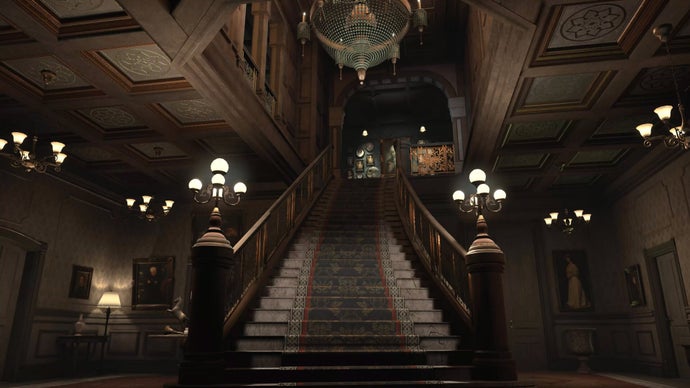
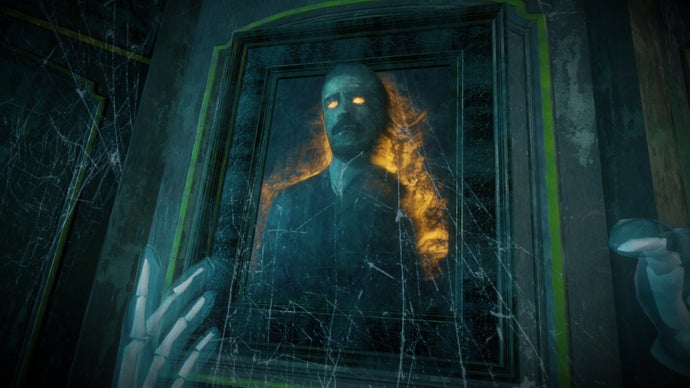
But that’s only the start of it; soon enough, you’re gifted a new toy that lets you exert your influence on the world in fun new ways. Armed with a magic lantern conveniently abandoned near your disembarkation point, you’re able to temporarily restore the dilapidation around you to its former glory simply by shining your beam upon it. The effects start small – at first a few rotten planks on a sagging jetty reassert themselves to permit passage up into the mansion’s grounds (and the ensuing climb is a beautifully orchestrated moment of sinister foreboding as the wind whips up, thunder cracks, and a gorgeous new rendition of The 7th Guest’s classic theme builds) but things get rather more magical once you’re inside. Under the light of your lantern, cobwebs instantly disappear from chandeliers, cracked floor tiles are restored to a pristine sheen, mysterious blemishes twist into helpful clues, and delightfully, the hundreds of paintings dotted around the house shift to reveal their darkly hilarious secrets.
The risk, of course, is that such a remake might go too far, polishing off so many of the original’s characterful idiosyncrasies that it loses its essence and charm, but Vertigo has found precisely the right balance here. The layout of the mansion remains largely unchanged, but it’s now been lovingly enhanced with oodles of spooky – but importantly not scary – detail; the perfunctory puzzling makes way for generally more involved challenges, but you’re still wrangling groups of symbols in the dining room or mucking around with tin cans in the kitchen. But nowhere is The 7th Guest VR’s perfect straddling of the old and new more evident than in Vertigo’s brilliant decision to keep the slightly naff FMV vibes of the original intact. Once again, Stauf’s guests are portrayed by real-life actors digitised and incorporated into the virtual scenes around you, and it’s just glorious, everyone involved oscillating at just the right level of dark camp. But now (and forgive me if this isn’t as extraordinary as I think it is; it’s been a while since I’ve played a VR game) you can somehow walk around the FMV, viewing the actors from all sides! No matter how many times I see the effect, it still feels like technological black magic to me.
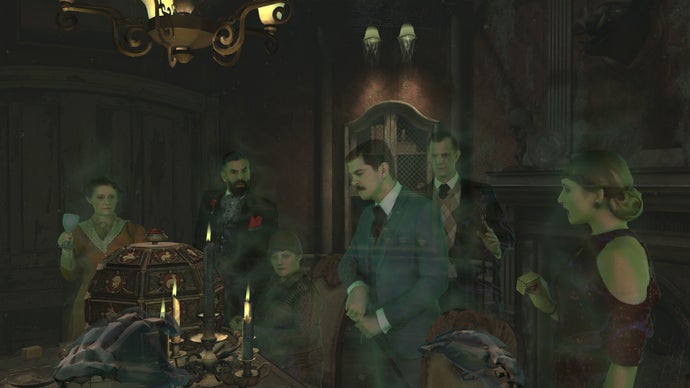
Let’s talk a bit more about those puzzles, though, as, in another reversal, they’re the real meat of the experience this time around. Gone are the perfunctory brainteasers of the original in favour of puzzles more carefully integrated into the whole. Now, each room of the house – taking a cue from Fireproof Studios’ excellent The Room series – contains multi-part conundrums that turn the experience outward; instead of pulling your focus away from the lavishly presented world around you, puzzles encourage you to explore your surroundings and investigate the exotic bric-a-brac and intricate contraptions scattered about each ramshackle location. At one point, for instance, Vertigo replicates a chess-inspired puzzle from the original almost wholesale but subverts its flow by first requiring you to solve a cryptographic game of pool and scour the gloom for booze bottles missing from the nearby bar.
Not every individual puzzle is a winner (the old press-this-thing-to-arbitrarily-effect-all-the-other-things-around-it wasn’t fun 30 years ago and still isn’t now) but even the worst are more forgivable when given a tactile VR twist and presented as a small part of a more complex whole. And, more often than not, there’s real VR magic to be found; one puzzle sequence brilliantly involves utilising a pair of magician’s hats as makeshift portals, shoving your hand in one so it pops out, impossibly, elsewhere. Even the more familiar puzzles are enlivened by some imaginative VR trickery; in the library, for instance, you’re asked to shift a series of awkwardly shaped blocks around a grid to squeeze them into specific spaces – but what could be a fairly mundane moment is infused with phantasmagorical wonder as, mirroring your on-grid actions, huge life-sized chunks of furniture hurtle around you, thundering back and forth across the virtual room. There’s a sense of showmanship here that would make an evil toymaker proud.
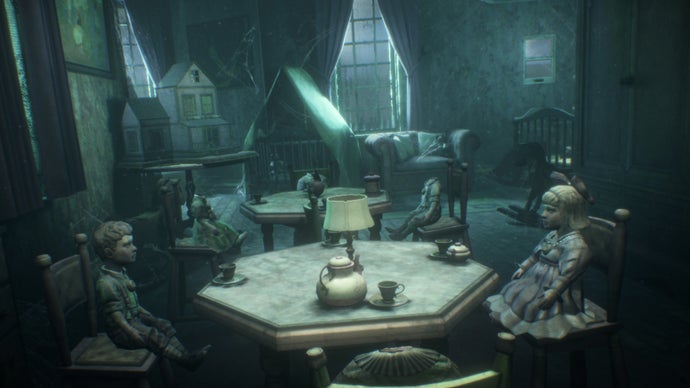
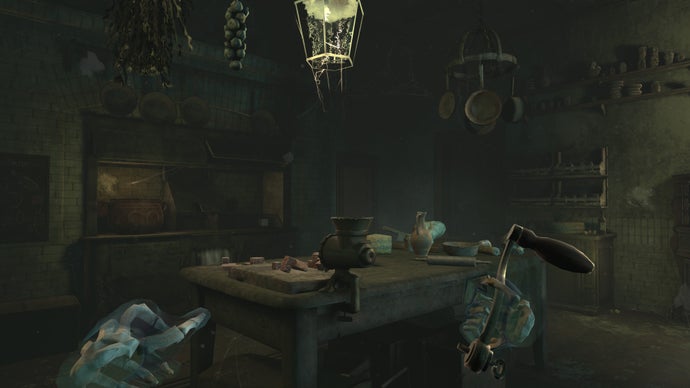
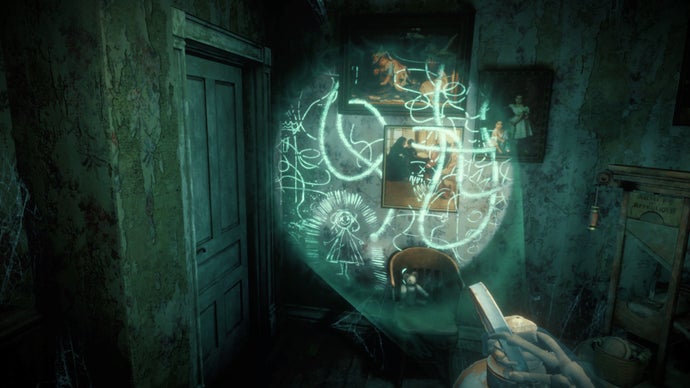
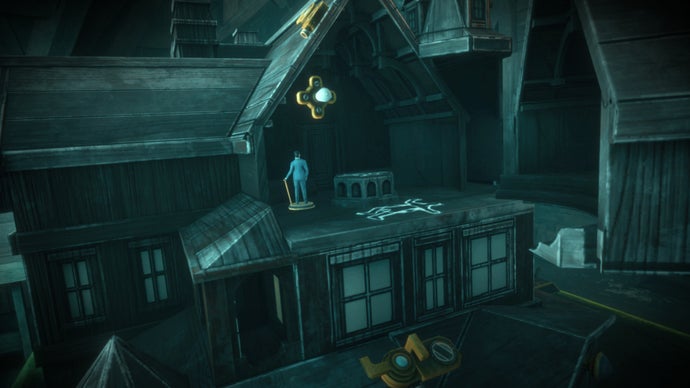
It’s wonderful stuff, as eager to enthral series newcomers with its spookily atmospheric operatics as it is to delight old-timers like me. And it really is full of little nods for long-time fans; the original’s Ouija-board-inspired pause menu returns as an interactive map you can whip out and wave around at will (and, of course, there are echoes of its skeletal cursor in your disembodied hands); scraps of paper hidden around the mansion form a fragmentary reworking of the 1993 game’s lengthy intro movie, reimagined as Gorey-esque illustrations that come alive in your hand; even the new script occasionally lifts dialogue wholesale from the original to deliciously disorientating effect. It’s still a little surreal to me that, more than 30 years later, The 7th Guest is back, wrenched from increasing obscurity and given gleefully ghoulish new life. The 7th Guest VR reinterprets a beloved – if, let’s be honest, not exactly classic – curio with reverence, grace, wit, and imagination, making for the perfect Halloween treat, regardless of whether you’ve crossed the threshold of that house on the hill before.
The 7th Guest VR is out now on Steam VR, Meta Quest, and PS VR2.
- SEO Powered Content & PR Distribution. Get Amplified Today.
- PlatoData.Network Vertical Generative Ai. Empower Yourself. Access Here.
- PlatoAiStream. Web3 Intelligence. Knowledge Amplified. Access Here.
- PlatoESG. Carbon, CleanTech, Energy, Environment, Solar, Waste Management. Access Here.
- PlatoHealth. Biotech and Clinical Trials Intelligence. Access Here.
- Source: https://www.eurogamer.net/the-7th-guest-vr-is-a-spooky-puzzle-treat-with-way-more-to-offer-than-nostalgia
- 30
- 3d
- 7
- a
- able
- About
- ABSTRACT
- across
- Action
- actions
- actors
- Adventure
- after
- again
- aged
- ago
- ahead
- alive
- All
- almost
- along
- also
- amid
- among
- an
- and
- Another
- app
- ARE
- armed
- around
- as
- At
- away
- back
- balance
- bar
- BE
- Beam
- beautifully
- because
- been
- before
- beforehand
- begin
- being
- beloved
- Bit
- Black
- blocks
- blood
- body
- brilliant
- build
- builds
- Bundle
- but
- by
- came
- Camp
- CAN
- carefully
- Catch
- certainly
- challenge
- challenges
- chance
- change
- Classic
- come
- coming
- compelling
- complete
- complex
- contains
- content
- conveniently
- cookie
- cookies
- Core
- could
- course
- cracked
- crafting
- create
- credit
- cryptographic
- curio
- Dark
- decades
- decision
- delight
- Design
- desktop
- detail
- Developer
- dialogue
- dining
- disappear
- Distant
- do
- don
- down
- drive
- each
- eager
- echoes
- educational
- Effect
- effects
- elevates
- enable
- encourage
- enhanced
- enough
- enthusiastic
- entirely
- Entrance
- essence
- Eurogamer
- even
- Every
- everyone
- everything
- Evidence
- evident
- exactly
- excessively
- exotic
- expect
- experience
- exploiting
- explore
- extraordinary
- familiar
- family
- fans
- far
- fascinating
- Fate
- Feet
- felt
- few
- Final
- First
- fit
- floor
- flow
- FMV
- Focus
- food
- For
- form
- Former
- forth
- found
- Free
- from
- full
- fun
- Fundamentals
- furniture
- future
- game
- Games
- Gaming
- gathered
- Gathering
- GDPR
- generally
- genuine
- George
- Get
- given
- glory
- go
- going
- gone
- good
- grab
- grace
- grand
- great
- Grid
- Group
- Guest
- Hall
- halloween
- hand
- hands
- has
- Have
- heads
- helped
- helpful
- here
- hidden
- High
- hilarious
- Hindsight
- his
- history
- hits
- holding
- honest
- Horror
- House
- How
- HTTPS
- huge
- Humble
- Hundreds
- i
- if
- imagination
- immediately
- importantly
- imposing
- in
- incorporate
- incorporated
- increasing
- individual
- influence
- infused
- INSIDE
- instance
- instantly
- instead
- integrated
- intent
- interactive
- interested
- into
- investigate
- involved
- Is
- Island
- isn
- isolated
- IT
- ITS
- itself
- jpg
- just
- keep
- kind
- know
- largely
- later
- Lavish
- layout
- let
- Let's Talk
- Level
- Library
- Life
- light
- lightning
- like
- Little
- ll
- location
- lot
- lots
- loved
- made
- Magazine
- Magic
- main
- mainly
- make
- maker
- MAKES
- Making
- man
- manage
- mansion
- many
- map
- March
- marrying
- matter
- me
- Meat
- memorable
- memory
- Message
- Meta
- Microsoft
- might
- mirroring
- miss
- missing
- moment
- moments
- more
- most
- movie
- Music
- must
- my
- myself
- myst
- Mystery
- Near
- needed
- NES
- never
- New
- newcomers
- newly
- no
- Nostalgia
- not
- nothing
- now
- of
- off
- offer
- often
- Old
- on
- once
- One
- only
- opens
- Opportunity
- or
- orchestrated
- original
- out
- outside
- OUTWARD
- over
- paced
- pages
- painting
- paintings
- pair
- Paper
- part
- particularly
- passage
- pause
- PC
- peak
- perfect
- perhaps
- plato
- plato data intelligence
- platodata
- platogaming
- play
- played
- player
- please
- Point
- pool
- portrays
- presence
- presentation
- presented
- proud
- PS VR2
- psvr
- psvr 2
- pulling
- Puzzle
- quest
- quick
- quote
- RAM
- random
- rather
- RE
- Real
- really
- regardless
- reimagined
- released
- remains
- Remake
- Remember
- replica
- replicates
- resembling
- restore
- returns
- reveal
- Revealed
- Reviews
- revolution
- right
- Risen
- Risk
- room
- s
- saw
- say
- scenes
- script
- Secret
- secrets
- see
- seeing
- sees
- sense
- Series
- settings
- shaped
- shift
- Simply
- since
- SIX
- small
- So
- Solutions
- SOLVE
- some
- somehow
- someone
- Soon
- sound
- spaces
- Speaking
- specific
- spirit
- sporting
- Squeeze
- stands
- start
- Starting
- Steam
- steam vr
- still
- storage
- Storm
- Story
- Strikes
- such
- super
- sure
- table
- Take
- taking
- talented
- talk
- targeting
- task
- tech
- Technological
- Technology
- than
- thank
- thanks
- that
- The
- The Game
- the world
- their
- Them
- theme
- themselves
- then
- there
- they
- thing
- things
- think
- this
- those
- though
- three
- thunder
- time
- times
- to
- too
- toward
- toy
- transformative
- treat
- trip
- true
- try
- turn
- turned
- twist
- under
- unthinkable
- up
- upon
- use
- ushering
- ve
- version
- versions
- very
- Video
- viewing
- views
- Virtual
- visually
- visuals
- vr
- VR Game
- wales
- Wall
- was
- wasn
- watching
- Wave
- waves
- way
- ways
- we
- welcomed
- well
- were
- weren
- What
- when
- where
- whether
- while
- WHIP
- WHO
- whole
- wholesale
- will
- wind
- window
- winner
- with
- wonder
- world
- worst
- would
- years
- yes
- you
- your
- yourself
- youtube
- zephyrnet

